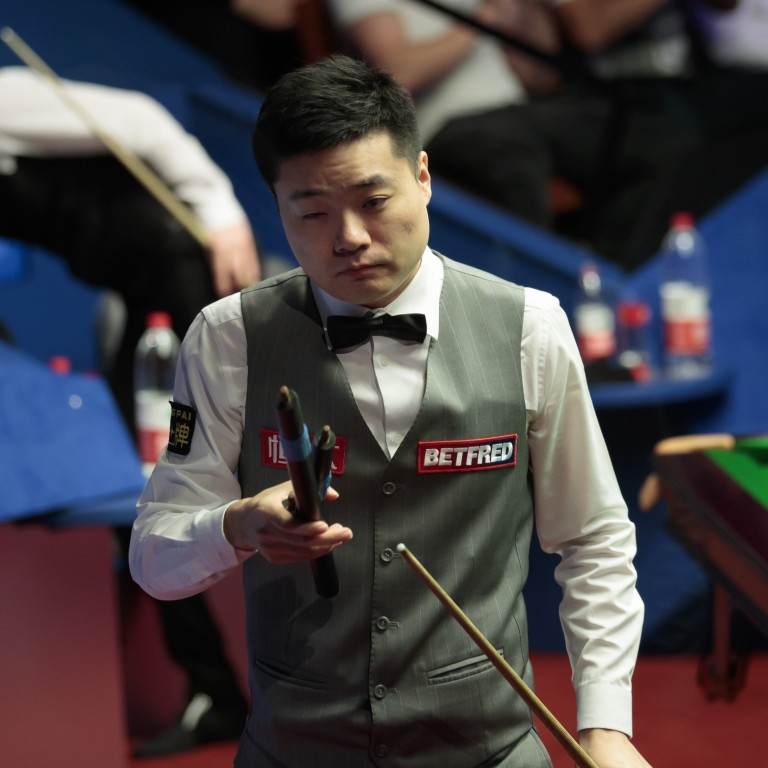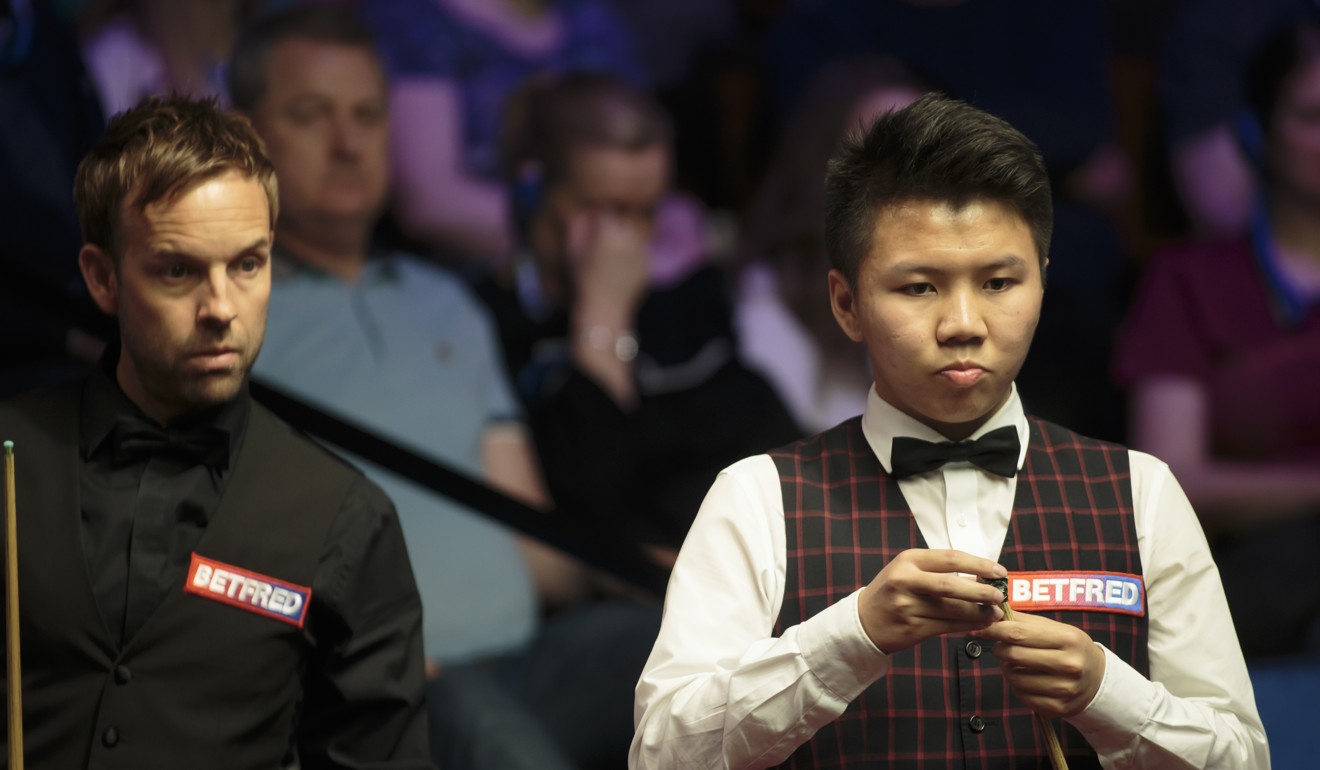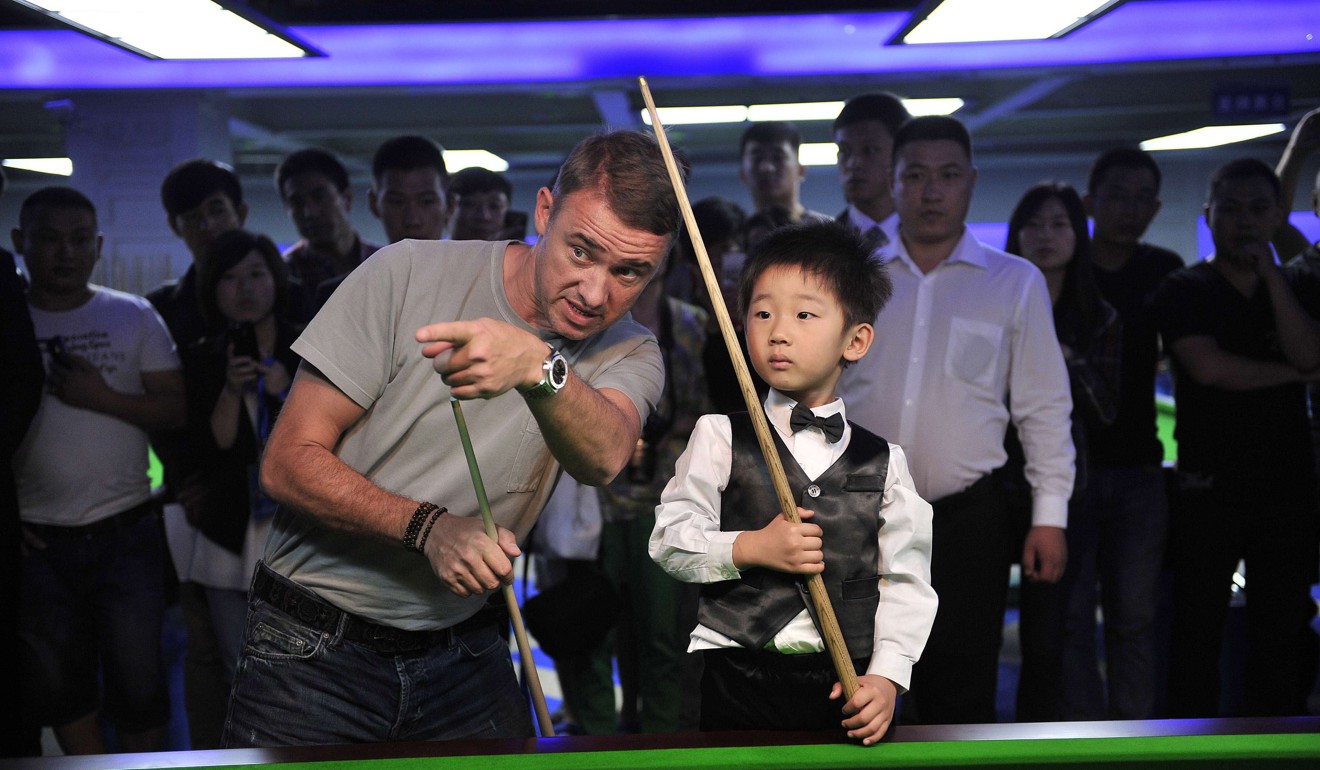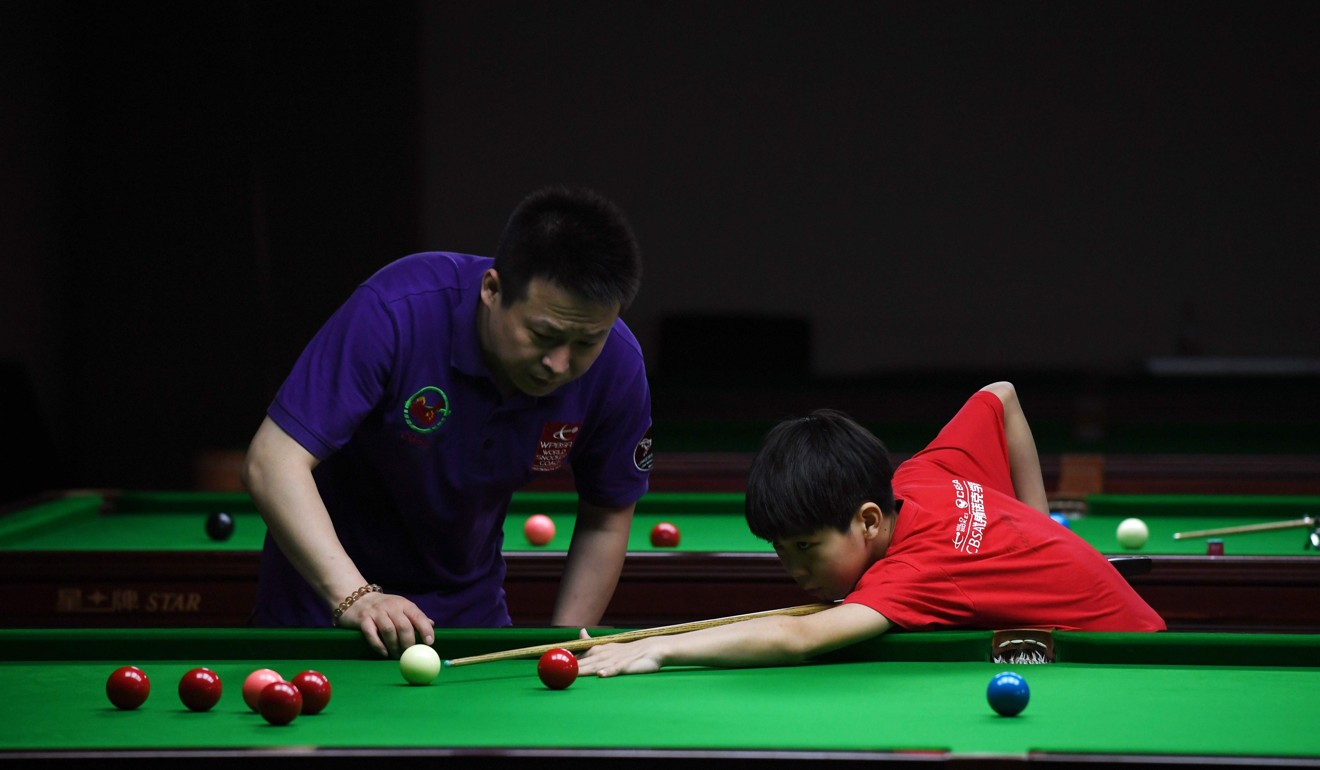
World Snooker Championship: Ding Junhui still shoulders China burden despite years of investment in the future
- Record number of Chinese players in the first round at the Crucible but all out by quarter-finals
- Increasing number of pros on tour yet none have followed Ding in winning a ranking tournament
It’s over 14 years since an unknown Ding Junhui rocked the China Open to beat Stephen Hendry in the final. Ding, who had only turned 18 days before, was meant to usher in the arrival of China on the world snooker stage, but has he?
In the intervening years Ding has done his best, briefly holding the title of world number one and winning 13 ranking tournaments.
But no other Chinese has followed suit and not even Ding has won at the Crucible, the Sheffield home of the World Snooker Championship, which is being contested this week.

It’s almost as if the replica of the Crucible they built outside Beijing in 2014 has not worked – the tournament has not been coaxed away from the Steel City, nor has a Chinese player lifted the famous trophy.
There have been inroads, though. At this year’s World Championship there were a record six Chinese players in the first round.

But only Ding and 21-year-old Zhou Yuelong made it into the second round and both subsequently fell at that hurdle.
Despite leading 9-7 going in to the final sessions of their matches they both went on to lose 13-9, Ding to Judd Trump and Zhou to Ali Carter.
There is no shame in that.

Zhou is only 21 and was one of four Chinese players making their debuts at the Crucible this year.
The youngest, Luo Honghao, is only 19 and will learn from being whitewashed by Shaun Murphy and Li Hang will hope for a similar lesson from his 10-1 loss to Barry Hawkins.
Zhao Xintong, 22, put up a fight in his loss to third seed Mark Selby while Stephen Maguire only just edged Tian Pengfei.

On paper the future is bright with Zhou, who beat world No 6 Mark Allen in the first round, one of a number of young Chinese players looking to match Ding’s career in the coming years.
For now though it is still Ding who carries the weight of Chinese snooker on his shoulders, even if those shoulders are now also used to rest the head of his baby daughter.
That’s something he has admitted to being a distraction this season.
“I won’t think too much about the remaining season as I haven’t seen my daughter since arriving in the UK in January, only through video communication,” he said in his post-match interview.
“I always stay up late into the night to play with her through video, as when I wake up in the morning, she will be sleeping.”
There are still those who believe that China is a sleeping giant in snooker, that it is only a matter of time.

Barry Hearn, the man who brought snooker to Hong Kong and China in the 1970s and 80s, told Stephen Hendry exactly that in the recent BBC World Service documentary, Snooker: Young, Cool and Chinese.
“Looking at it in realistic terms, that will be over half in the next two or three years,” Hearn said of the number of Chinese on the tour, “because the standard of players coming from China are pretty awesome and 17,18, 19-year-olds are getting their tour cards.”
There are a record 24 Chinese players on the tour this year, up from 22 (of 131) last year and second only to the English who have 55 of the 128 players on this year’s tour.

Nevertheless, even with a record number of Chinese players on the tour and at the Crucible, things can be seen as going backwards. Two players in the second round is the same as last year, while Ding went one better and reached the quarter-finals then.
Taking the season as a whole, Ding, Zhou, Cao Yupeng and teenager Yan Bingtao all finished runners-up in world ranking tournaments last season but only Lyu Haotian, who did not qualify in Sheffield, has reached a final this season at the Indian Open.
So is it a case of glass half-full or half-empty?
The positivity comes from the progress made in the number of people taking part at the grass roots level – Chinese snooker halls, in contrast to those in Britain, are packed, welcoming and growing in number.

China also hosts the largest number of ranking tournaments behind England and several of the young pros that Hearn mentioned have come through the World Snooker College before moving to live in the UK, often in Sheffield like Ding did before them. This is seen is proof that the investment is working, fuelling dreams of an all Chinese final in the future and even a day when China’s Crucible hosts the World Championship.
Last year, Mark Selby said that China would play a more important role in the sport “sooner or later”, but that feels like something we have been hearing for the last 14 years.
After the briefest of promises in Sheffield, it seems sooner is still easier said than done.

